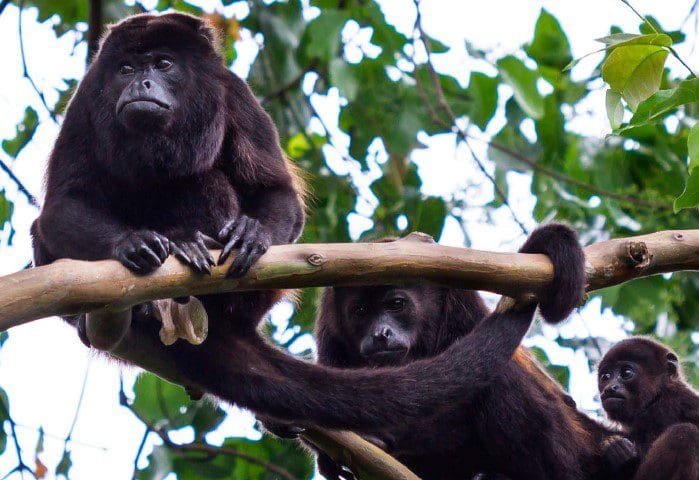
Let’s Hear it For the Howler
Howler monkeys are the largest of the New World monkeys, comprising several distinct species throughout the tropics of Central and South America.
The Ecuadorian mantled howler is the subspecies recognized in Costa Rica. These monkeys live in troops of up to 40 individuals, although most groups are smaller than this.
Male howlers are normally larger than females, with the ability to vocalize over much greater distances in their heavily forested habitat. The howling of males can be heard from two to three miles away under the right conditions.
Howler troops sustain healthy populations by avoiding inbreeding to a large extent. This is accomplished by chasing away most young members as they mature, ensuring the influx of animals from unrelated groups. Mating can take place anytime throughout the year and females normally give birth to one infant.
Howler monkeys are relatively inactive, spending most of their time in the trees sleeping, eating and socializing. Their low-energy diet consists primarily of leaves most of the year, with fruit making up a smaller percentage of nutrition. The leaves and fruit of the ficus tree tend to be preferred. Flowers also make up a significant part of their diet, particularly during the dry season. Mortality is high among howlers, particularly during the first year of life, which only about 30 percent of juveniles survive. Beyond that, however, howlers have a life expectancy of 25 years.
Despite the destruction of their habitat, and collection for the animal trade as well as food, these monkeys are doing well. This is due to their adaptability to change and minimal living space requirements.
